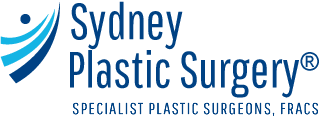Buttocks Liposuction
Liposuction is the most commonly performed plastic surgery in Australia. This technique reshapes the body by eliminating localised fat deposits. Usually, the suctioning is made in the low back above the buttocks, the back of the thigh just beneath the buttock fold or on the hip at the side of the buttock. The tendency to accumulate fatty deposits on the buttocks may be inherited, and these deposits may be resistant to diet and exercise.
Buttock lift and Augmentation
Before After Photos
Liposuction can successfully trim excess fat to improve balance and symmetry. If you are considering buttocks liposuction, the following information will introduce you to the procedure.
Consultation
During your consultation, Dr Barnouti will discuss the changes you want to make in your appearance. He will also clarify the different options available, the procedure, risks and limitations.
Your Specialist Plastic surgeon will start with a physical examination to assess your overall weight, your skin and muscle tone, and the fat deposits in various parts of your body. He will also document your complete medical history, including any medications you are taking.
Be certain to ask all the questions you have about the procedure. Furthermore, ask to see photos of the surgeon’s recent liposuction surgeries, before and after treatment. Learning everything you can about your options, risks, and benefits is the key to making an informed decision.
Surgery
Dr Barnouti will mark the exact areas of the body where the fat will be removed. An intravenous (IV) line will be inserted in your hand vein to ensure the fluid level and give you your sleeping medication. You or your surgeon may choose for general anaesthesia, or you may select local anaesthesia and a sedative for relaxation.
During the Buttocks Liposuction procedure, the surgeon makes a tiny incision in the skin, usually in or near the buttock crease then inserts a thin tube called a cannula into the fatty area. The cannula breaks up the fat deposits and sculpts the area to the desired proportions. The unwanted fat is suctioned out with a vacuum cannula.
In the super-wet technique, a saline solution comprising a local anaesthetic and adrenaline is injected into the area to be treated. This makes the fat deposits easier to break up and extract. This extra fluid also minimises trauma to the surrounding tissue, reducing swelling and post-operative pain. The administration of adrenaline also reduces bleeding during surgery, further reducing risks.
The tumescent technique, in which more significant amounts of liquid solution are injected, has similar benefits.
A relatively new method, water jet soft liposuction, uses water jets to liquefy the fat and numb the area, followed by fat suction. Like the super-wet and tumescent techniques, the water jet technique minimises trauma, bruising and blood loss. It is beneficial for a small and moderate amount of fat.
Your surgeon will choose the best technique for you. His choice will be determined by a combination of factors, including the precise area to be treated, the amount of fat to remove, and your preferences.
What are the risks associated with this procedure?
Plastic surgery, like any surgical procedure, carries inherent risks and potential complications.
Please read our Risks and Complications of Plastic Surgery page.
After surgery
For a day or two, you can expect to feel fatigued, as though your body has been through a workout – and it has! Your hips and legs will be stiff and sore, and you may experience some pain, burning, swelling, bleeding or temporary numbness. You will be prescribed simple analgesic medication to relieve this initial discomfort.
A small drainage tube is sometimes inserted underneath the skin to drain excess fluid. Your doctor may prescribe an antibiotic ointment to avoid infection at the incision sites. Your stitches will be removed in a week to 10 days unless they dissolve independently.
You will be fitted with a tight compression garment to be worn for up to 6 weeks following your surgery. This specially designed garment will help reduce pain and swelling and help your body settle into its new shape.
Getting you back to work and regular activities
Most of the bruising and swelling should subside within 3 weeks. You will be able to start light activities as soon as possible. Return to work within a few days if your work is fairly sedentary. You should avoid strenuous activities for 2 weeks as your body heals. It requires 2-3 weeks to resume all normal activities.
It is imperative to continue wearing the compression garment, which should be easily concealed under your clothing, for 4-6weeks.
Call us on free phone 1300 002 006 if you are outside Sydney or 9561 0222 if you’re in the Sydney area
